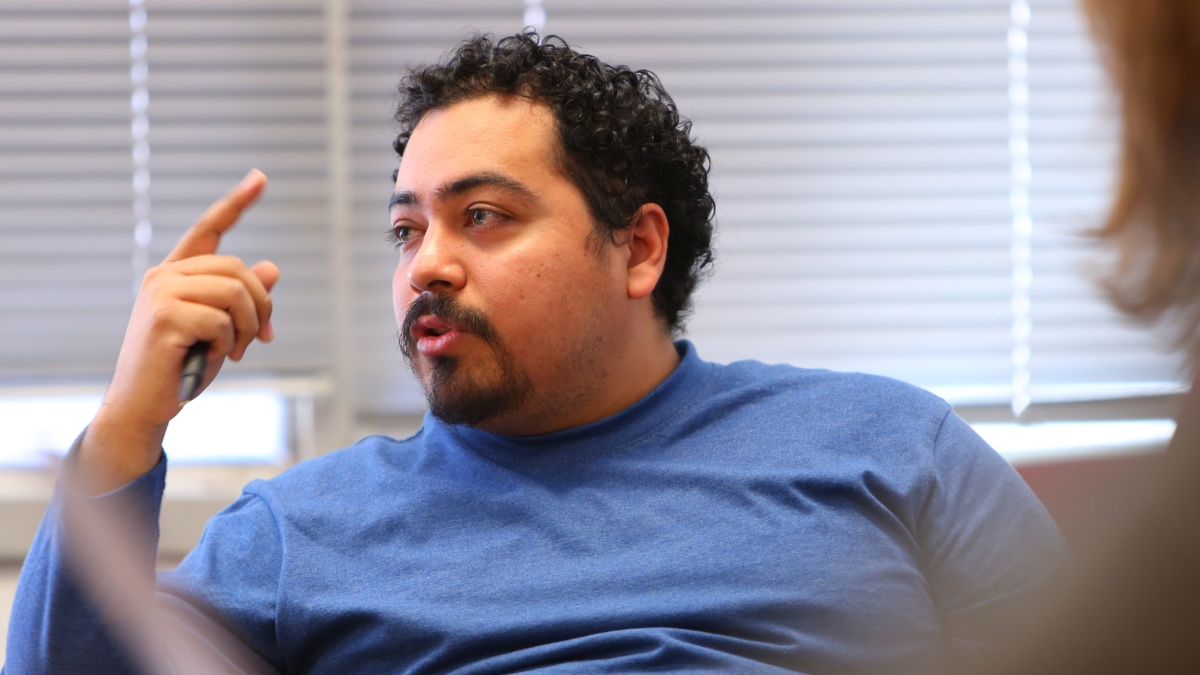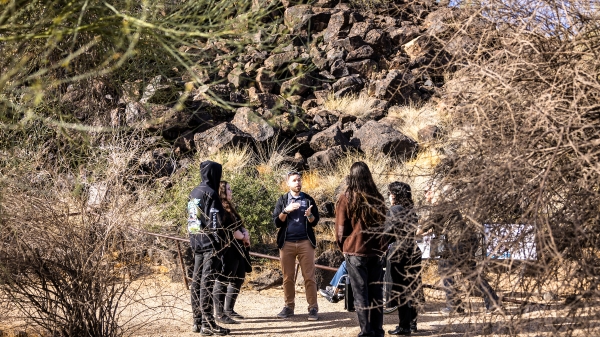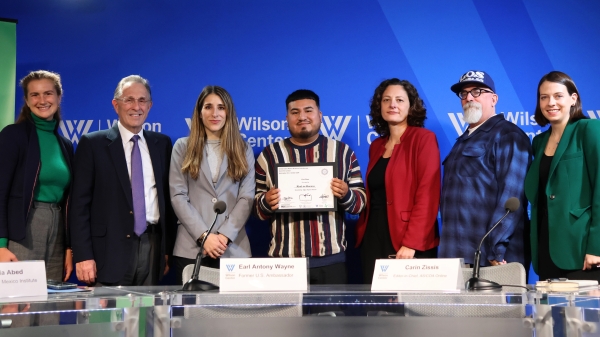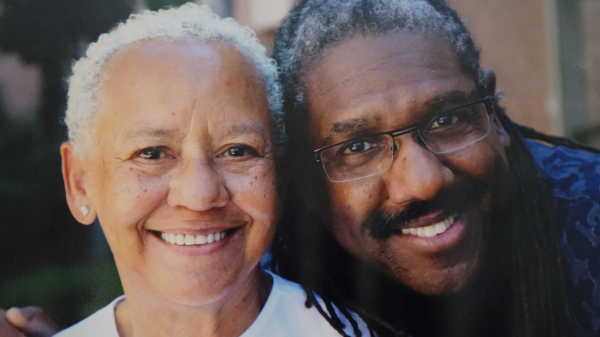New digital tool accelerates ASU doctoral research

Jose Gomez, a Connected Academics Fellow, discusses the new digital portfolio tool.
A breakthrough is on the horizon for doctoral students and the dissertation process at Arizona State University.
Digital portfolios, introduced in 2013 and accessed through MyASU by more than 59,000 ASU students, now offer innovative opportunities tailored for PhD students and their advisors.
During the course of obtaining their degree, doctoral candidates typically meet with their committee and mentors through frequent email and personal meetings, and exchange paper and Word documents for review. Jose Juan Gomez, a doctoral student in Spanish letters and cultures and a Connected Academics Fellow says that the new tool has given him more control over his academic progress.
“I upload my readings and drafts of my prospectus. It is available to my chair and committee to review and make comments,” he said. This portion of his portfolio he keeps private but makes his CV and other professional documents public so they are easily available online to prospective employers.
Before adoption of the graduate tool, he had to keep track of a 69-page document on his department website that outlined all the requirements to earn his doctorate. “Now everything is itemized and requirements, classes and time to degree are integrated into the new portfolio.”
“It’s a very practical way to keep track of my own development and time to degree. I have more control over the process. By the time I complete my degree I will be better prepared to go on the job market because I will have the documents that I need all in place and ready to show to any employer.”
The improvement to the digital portfolio program was spurred by Eric Wertheimer, associate dean in the Graduate College, and George Justice, English professor and dean of humanities in the College Of Liberal Arts & Sciences.
The pilot program is in use now by Connected Academics and is integrated with every doctoral program in ASU’s School of International Letters and Cultures (SILC). The aim is expansion to all ASU doctoral students as more academic units express interest in and see the benefits of utilizing the digital graduate tool.
“Digital portfolios will be a game-changer for graduate education, allowing students to bring together their work, reflect upon it, and use it for scholarship and career development,” Justice said. “At the heart of it, digital portfolios empower doctoral students as academics and professionals.
ASU is the first university to embrace digital portfolios at the doctoral level, providing our students with a distinct advantage in the academic world."
Departments interested in developing the graduate tool for their specific programs should contact Eric Wertheimer at eric.wertheimer@asu.edu or Shannon Lujan at Shannon.Lujan@asu.edu.
More Arts, humanities and education

Petroglyph preserve celebrates 30th anniversary with ancient, modern tales
The Deer Valley Petroglyph Preserve provides a beautiful walk through a pristine desert where chuckwalla lizards are as plentiful…

Kaleidoscope short film contest inspires powerful binational filmmaking in its second year
“We come to this country not to steal anybody’s jobs but to take advantage of the opportunities that the rest ignore. We’ve been…

ASU's Neal Lester reflects on life, death of poet Nikki Giovanni
When Neal Lester heard on Monday that poet and activist Nikki Giovanni had died, the news hit hard.Lester, the founding director…